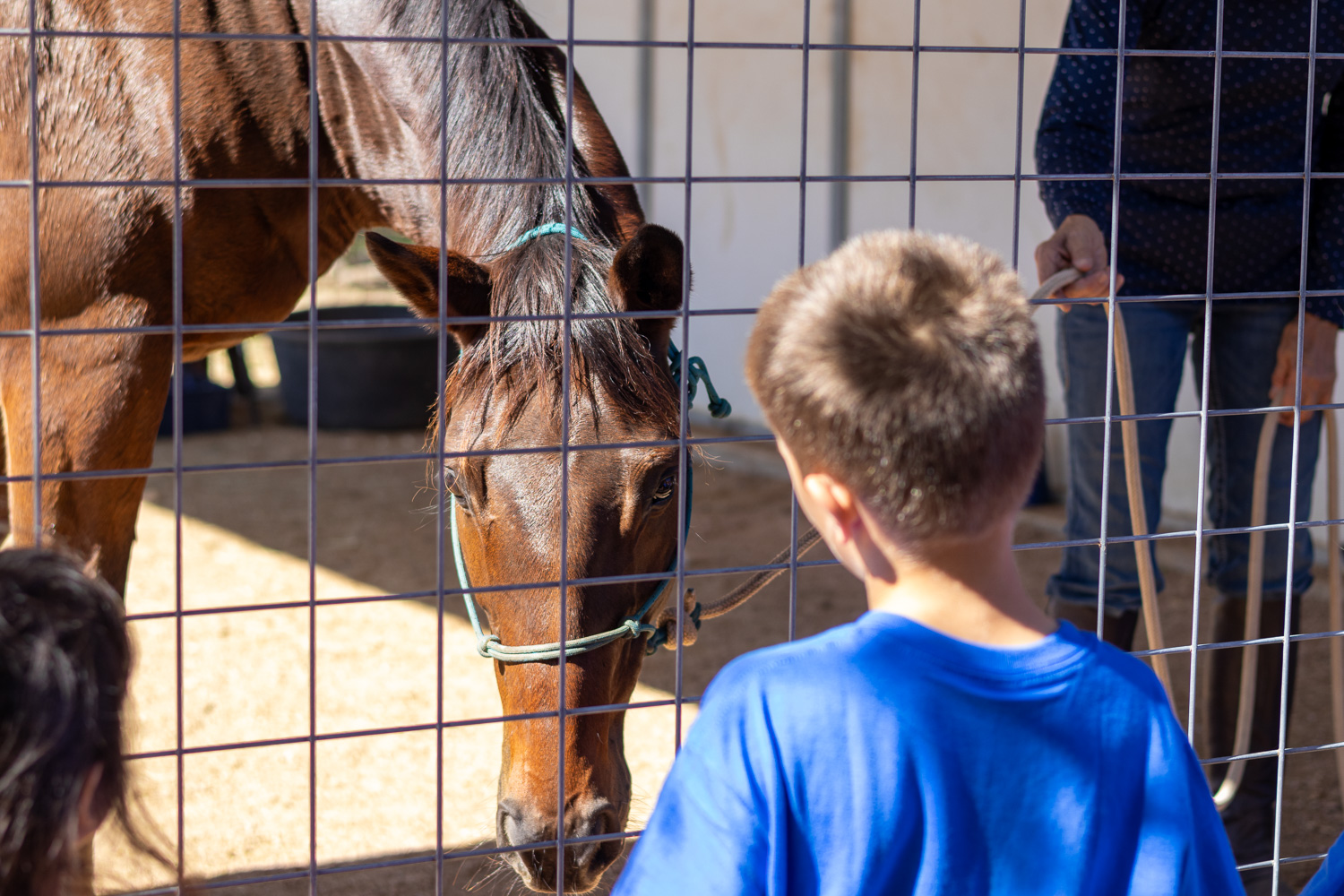By Jewel New
Jewel is currently a horsemanship intern at LOPE.
LOPE hosted a clinic with Linda Hoover last month. I was able to participate in this clinic, and I was quickly drawn to Linda’s style and philosophy, as were many of the other students who had not worked with her before. There were classical and western dressage horses, ranch horses, and a few of LOPE’s OTTBs. For the horses, Linda took into account their unique pasts to create independent goals for each horse — staying away from a uniform teaching style. This clinic was like no other horse education I have ever had, because of the teacher.
This clinic was like no other horse education I have ever had, because of the teacher.
I started off the clinic in the morning on a little ranch horse (Nic) that I had been riding dressage on for about a week. Linda asked me about my experience as well as Nic’s. I was pleasantly surprised by the care she took in getting to know us. In clinics I have done in the past, there are usually only a few quick questions about the horse before the clinician jumps in. Linda wants to really understand the horse and rider before she shows them what to work on – seems like that would be common sense! Linda gave me some exercises that helped our lateral work and balance. For example, I was told to release my reins when Nic was just standing so that he is not waiting in the ‘ready position’, which can be difficult to hold for a long time. I loved this piece of advice because it proved to me that Linda really does have the best interest of the horse in mind at all times.
On day two, I watched all three sessions. The first horse that Linda worked with was very nervous about unfamiliar farriers and other horse professionals coming up to him. Linda first had him get to know her by letting him smell her and by hand-walking him around. She then did flag work, starting by gently rubbing the horse’s head and neck with the flag for exposure, then moving to the rest of the body. To help with the horse’s fear of new people coming up and petting him, Linda brought a friend into the pen who walked up to the horse, pet him, and stepped back, all while Linda was holding him. She repeated this many times on both sides until he gradually started to calm down and accept the pats. When a vet or farrier comes to care for a horse they do not have the time to let it get to know them, they just walk up to the horse and start working. This exercise helps with that.
One of the flag exercises that Linda practiced with multiple horses throughout the clinic was the ‘flag limbo’. In this exercise the horse walked in a circle around her; she held the flag above and in front of his head so that he would have to walk, or ‘limbo’, under it. This helps the horse get used to the flag and other things that he or she may have to step under.
Many riders end a ride when they feel they have accomplished what they wanted, but it should really be about the horse.
When Linda finished one of her sessions of the day, she said that it is extremely important for a horse to finish on a good note. This is something that LOPE practices. Oftentimes, if the horse is being great and doing exactly what we ask of them, then we will end a session early. How a horse ends a session determines how he will do in the next. Many riders end a ride when they feel they have accomplished what they wanted, but it should really be about the horse. The horse needs to be happy when he finishes working so that he does not come back the next day not wanting to work. This is a perfect example of how Linda Hoover teaches and trains for the horse, for the horse and rider to work together in harmony.






